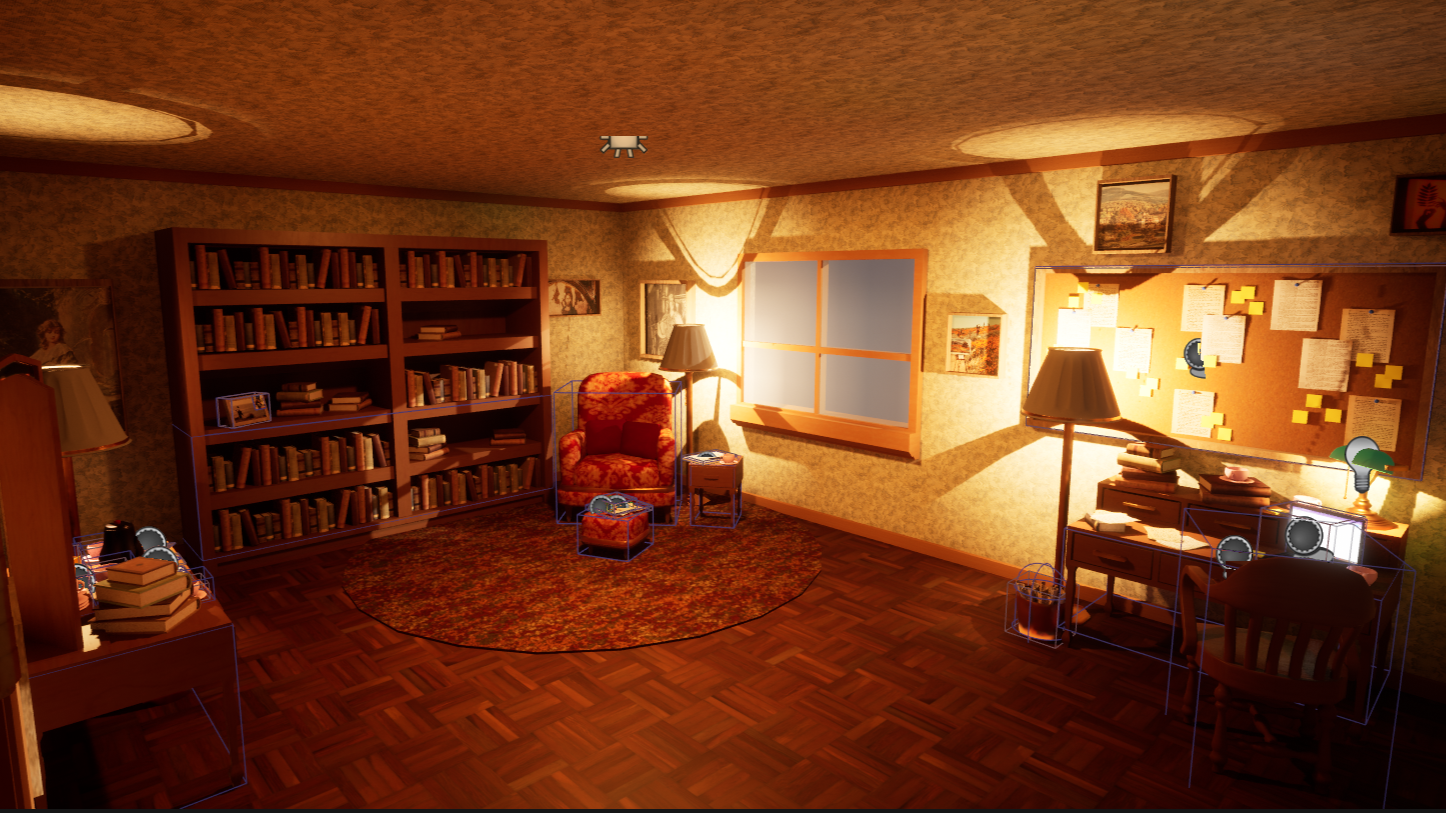
The Writer's Nook
A downloadable game level for Windows
The Writer's Nook
Introduction:
Your roommate, Sam, has rushed off somewhere but without his glasses. He's asked you to find them for him. Search his office for the glasses and just maybe you'll uncover where he was going in such a hurry.
Game level can be downloaded and played at the bottom of this page.
General Info:
- Genre: Single-player, narrative puzzle game
- Platform: Windows
- Themes: Loss/Grief
- Duration: 1 Level, >5 minutes of gameplay
Controls:
- [WASD] = Basic Movement
- [SPACE] = Jump
- [E] = Interact
- [ESC] = Close Game
About Development:
Inspiration:
The general concept for this game level is very much influenced by the 3D set I chose to use. This Writer's Nook environment model was developed as a separate project (details about its development can be found here) and I wanted to implement that model into a game. A lot of the design of the level is centered around the design question of "What game-play fits this space?". With the space being rather confined with a lot of detail, I chose to focus the game-play around the details of the space.
Features:
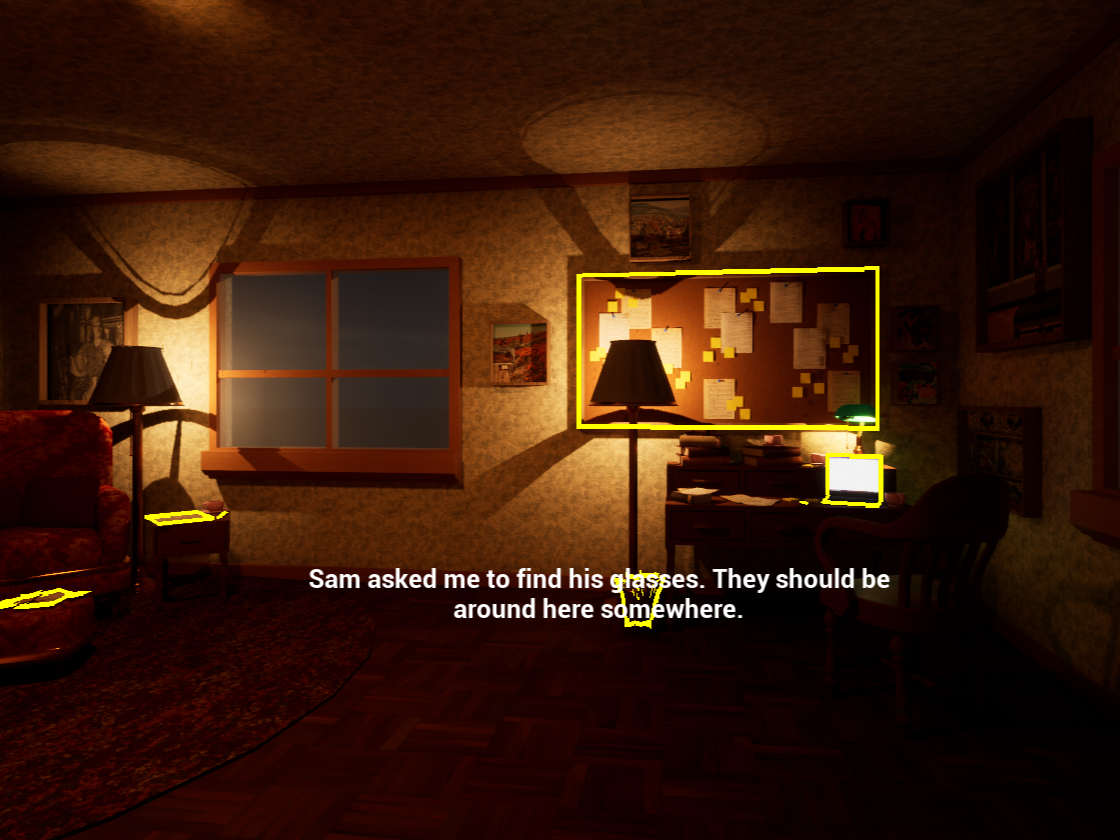
This is a narrative find-and-retrieve game level. Players are prompted to find a specific item in the environment (in this case, Sam's glasses). The interactable objects are highlighted using a post-processing shader. A UI prompt on the screen informs the player of their objective. Additional UI is shown when the player is directly looking at something that is interactable.

There is a shader being used to differentiate which items are interactable: the interactability of those objects is made salient by the yellow outline around them. However, because the objective of the level is to find the glasses, having the glasses be highlighted at the start of the level would make the level too straightforward to complete. To solve that issue, the shader is enabled for the glasses once this pen on the table is interacted with. I've chosen this pen to be the "trigger object" for that shader since it is a continuation of a through-line of items: the pen cap is found on the desk and prompts players to look for the pen body. The pen and its cap show the clearest trail the player can follow as they search for clues as to where the glasses would be.
The graphic above also illustrates how once an item is interacted with, the outline shader is turned off for that object: the pen is outlined in the first frame and not outlined in the second frame. Doing so makes the things that the player hasn't interacted with more salient since the objects that have already been interacted with would no longer be competing for the player's attention against them.
Level Design:
Way-finding Techniques
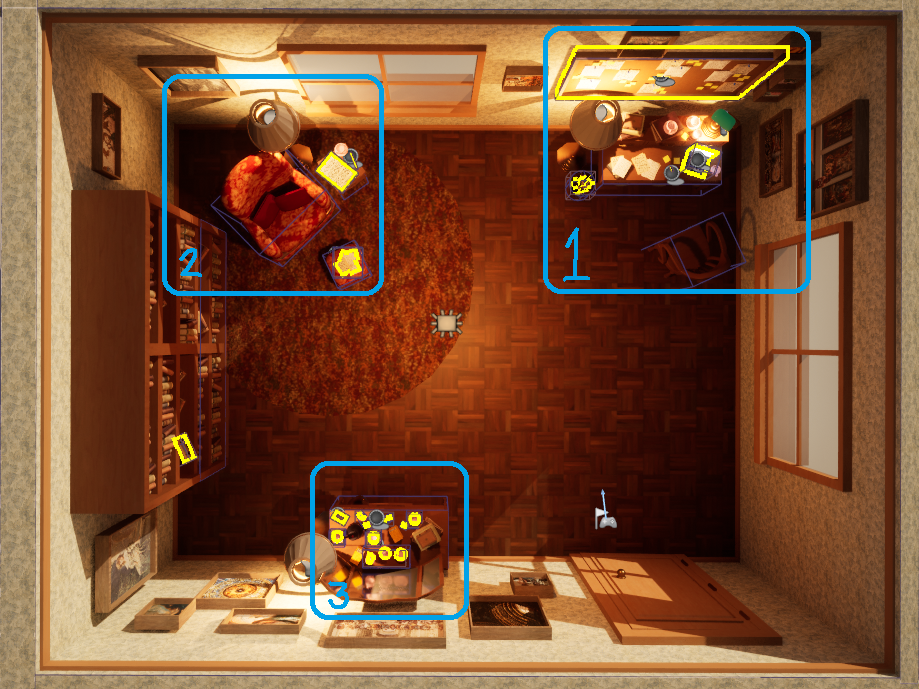
This level didn't need a ton of obvious way-finding elements as it is a realistic room, a relatively small space, and it already has the affordance that kind of environment has. Most people have interacted with interior spaces and thus know how these spaces are meant to be interacted with.
There are three nodes in this level, as highlighted in the image above. These spaces
define the three main purposes this room has regarding how it is used narrative-wise. Those purposes are what determined the set dressing and staging of the level. While Area 3 is well defined since all the elements that make up the area are mostly set on top of a piece of furniture, the other two areas (Areas 1 and 2) are defined by the proximity of each piece of furniture to each other. We can tell that the wooden chair by the desk is part of the area the desk is in because of its proximity to it, for example. The structural features of the room serve as the landmarks of the space: the 2 windows and the door.
Design Principles from Christopher Alexander
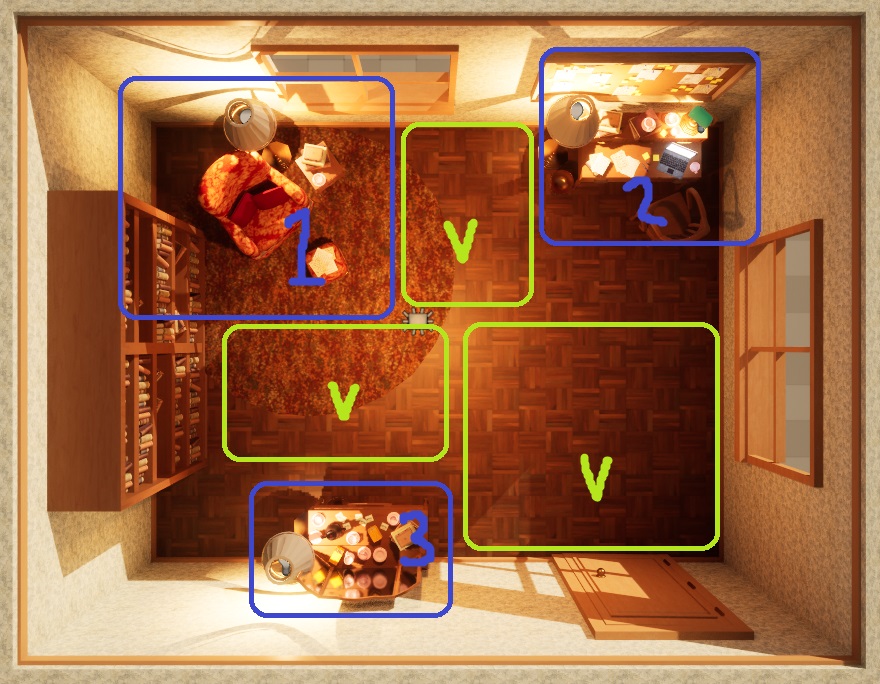
Strong Centers
There are three strong centers to the space of this level: The desk area (2), the sitting space (1), and the tea area (3). They each are their own space in this larger space.
Not-Separateness
These three spaces are not separate from each other, they interact with each other and their traits (so to say) merge with each other. You find books from the sitting area in both the desk area and the tea area. You find tea cups from the tea area in the other space. You find papers from the desk area in the sitting area. And so on. Each area still has its distinct identity but each area/center intermingles with each other making the level as a whole like a space in and of itself rather than 3 separate spaces in a room. It gives the room a lived-in feel; it makes it like this is a space that someone uses rather than a space designed for a game.
Contrast/Voids
The main contrast of the space is between the areas or centers of the room and the rest of the room. As already mentioned, there are three centers to this level, but those centers only stand out as centers because of the lack of furniture in the other spaces of the room (the voids that are the "empty" spaces in the room, marked in green a with a "V" in the image above). If there were things in these spaces, the room overall becomes less pleasing and the intention becomes convoluted and chaotic.
Interior Design Elements
When I originally designed the space of this level, enrichment was a big aspect of it even if I didn't know that that was what I was doing. There's a lot of complexity to this space that makes it enriching and enjoyable to look at without being too much. That complexity comes from a lot of the smaller details of the room (the trim on the floor and ceilings, the props around the space, the paintings (all highlighted in the above image)) but there's not so much complexity that it is disorienting.
Glasses Placement
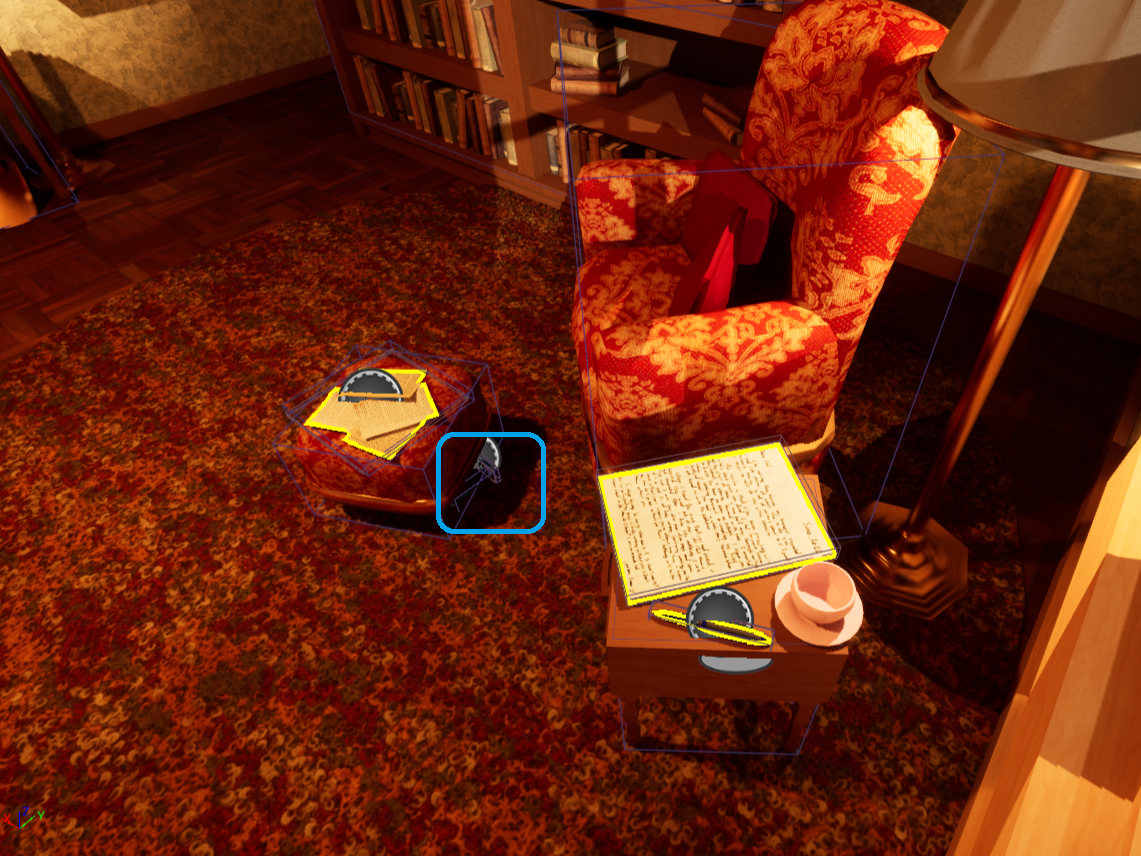
The imperative goal of the game is finding (Sam's glasses). Achieving that goal, while not difficult, shouldn't be done within the first 10 seconds of playing the level. So, the glasses needed to be strategically hidden in the scene. Hiding the glasses somewhat under the ottoman and within its shadow accomplishes this. Here, the glasses aren't obvious to the player when the game first loads and may not be for the first minute or so of gameplay. However, eventually, during the gameplay, the outline shader mentioned previously is enabled for the glasses object making it salient for the player.
Brief Devlog:
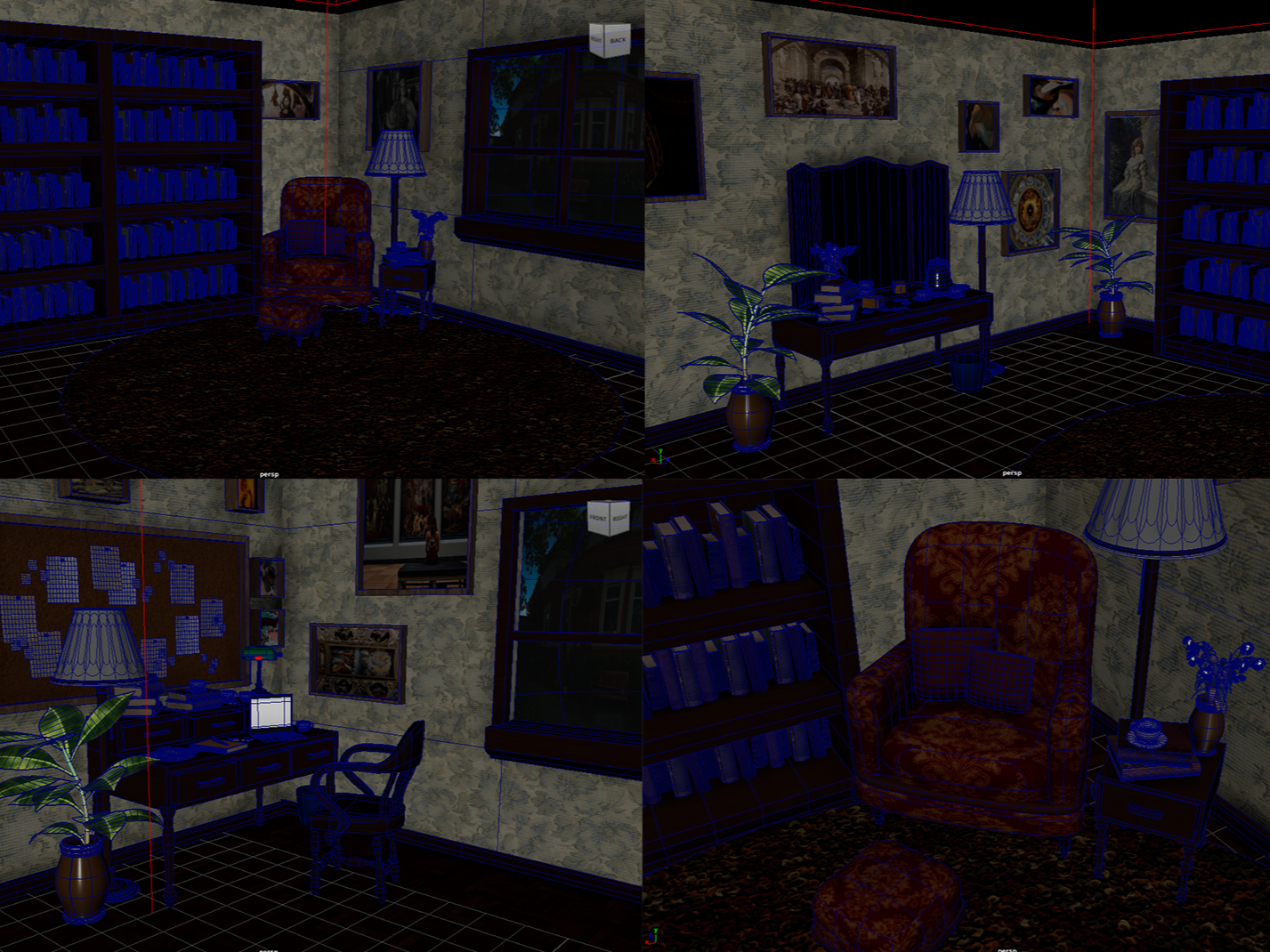
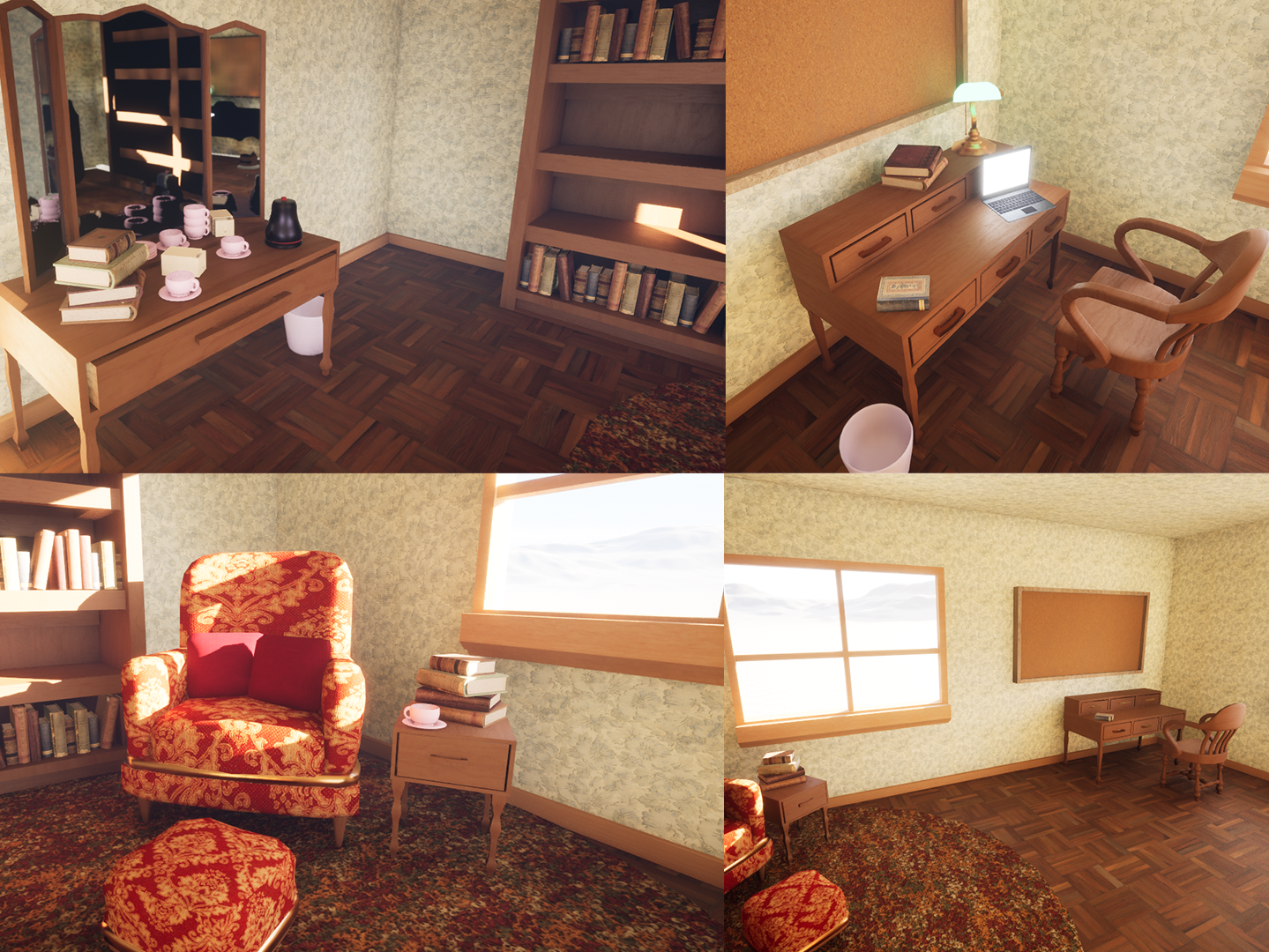
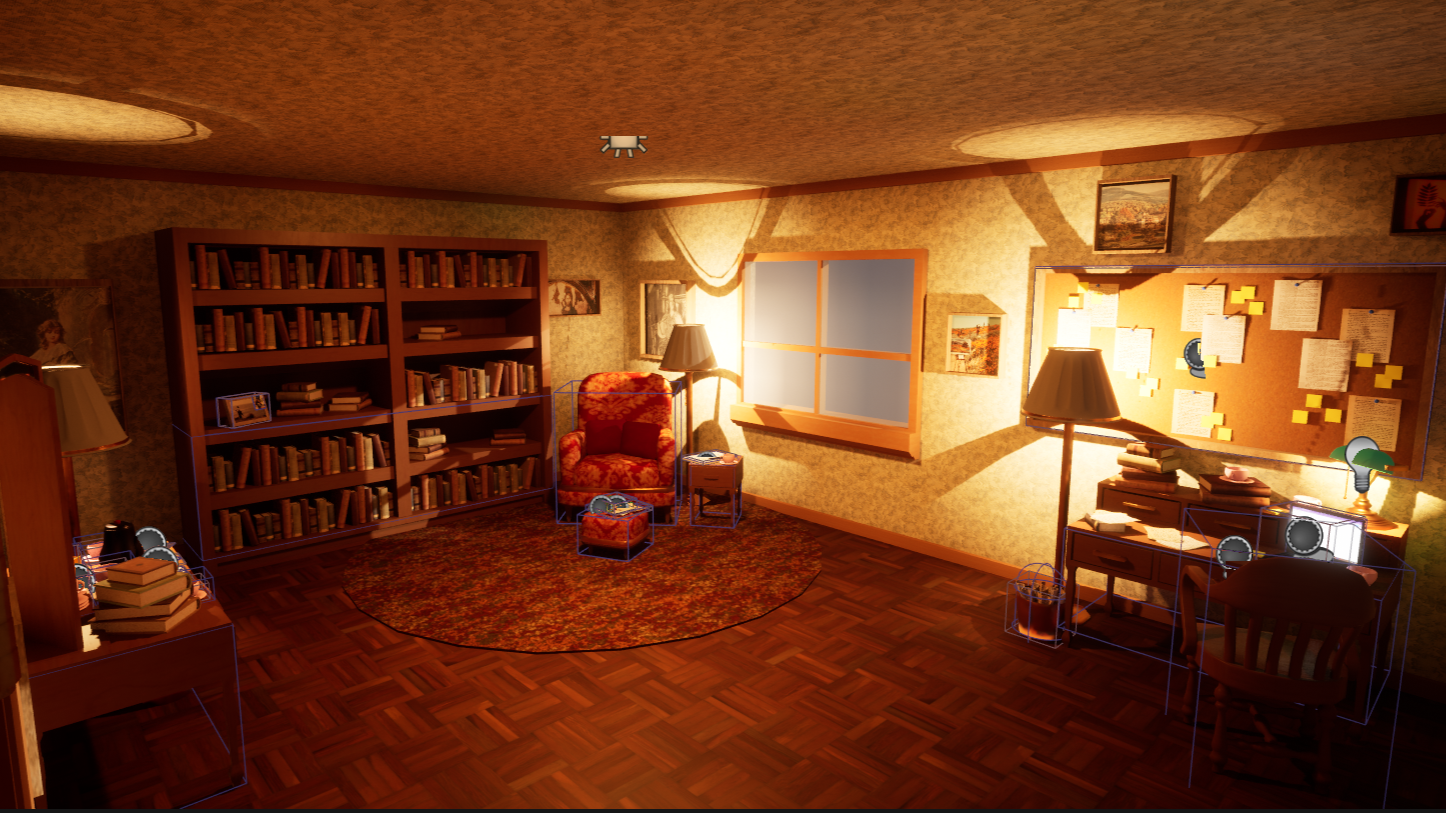
Software and Tools Used:
- Unreal Engine 5.2 - Level Design
- Autodesk Maya - Modeling
- Adobe Photoshop - Custom Texturing
Credits:
Art:
- Various 2D Textures: https://www.textures.com/library
Tools and Resources:
- Unreal 5 Youtube Tutorials: https://www.youtube.com/playlist?list=PLQN3U_-lMANNUTT77wEHBgAH8wywKJzjw
- Epic Games Resources: https://dev.epicgames.com/community/learning/paths/7a/welcome-to-unreal-engine
| Status | Released |
| Platforms | Windows |
| Author | Ciarenn Hollis |
| Genre | Puzzle |
| Tags | Game Design, Narrative, Unreal Engine |
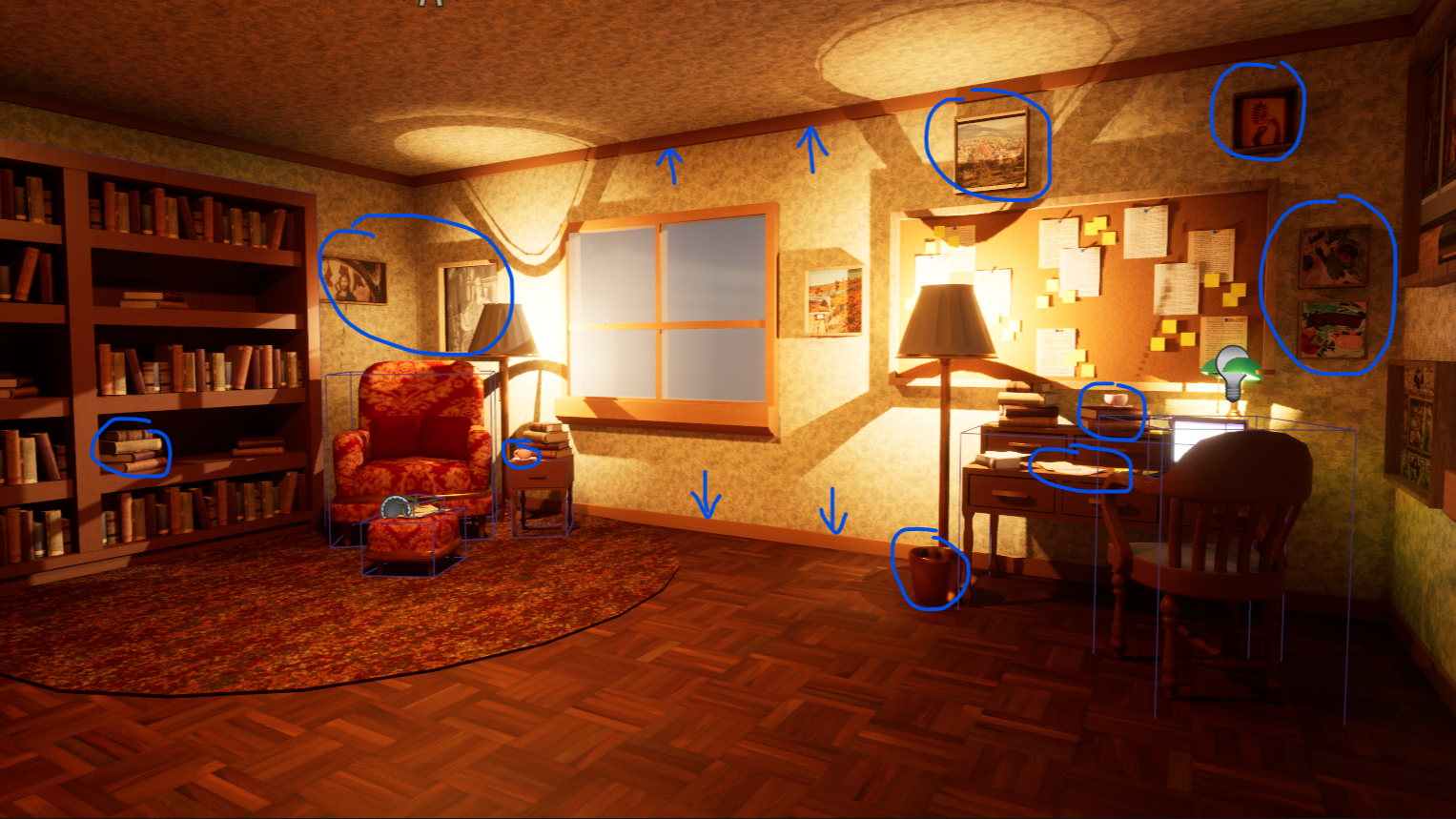
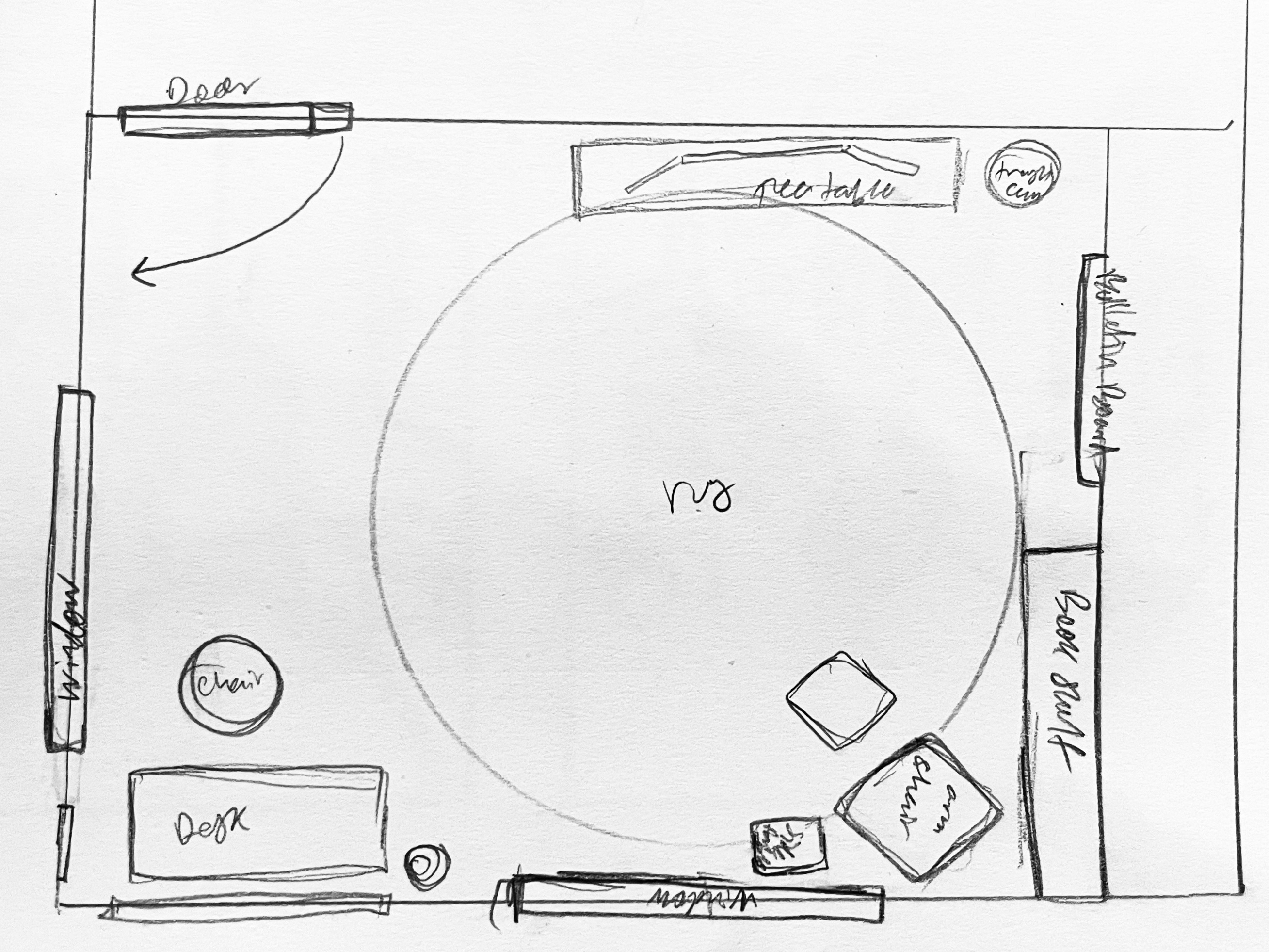
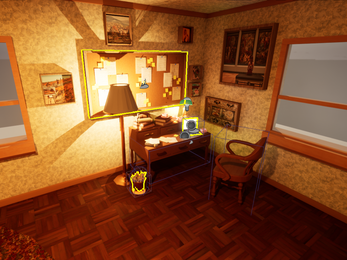
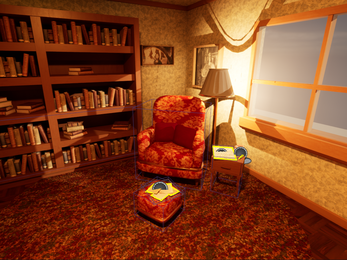
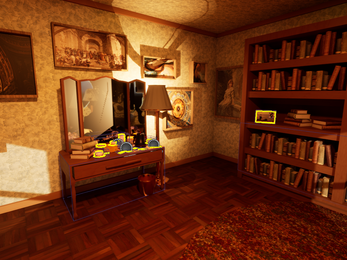
Leave a comment
Log in with itch.io to leave a comment.